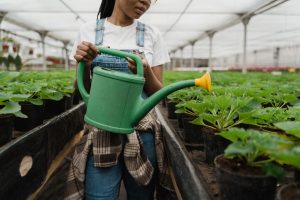Business reporters with an agribusiness focus might find the soybean industry an excellent area for human interest, trend and economic stories. This blog provides some tips for writing on soybeans and highlights the core news stories on the topic.
Soybeans and agri-business
Step one to writing any crop story is understanding its place within agri-business. Some core facts about soybeans follow:
- Soy is one of the few plants containing rich protein source. According to the World Wildlife Fund, a nonprofit group, soybeans contain 38 percent protein — that’s twice as much as pork, three times more than eggs and 12 times more than milk.
- Soy oil is the second most consumed oil in the world, after palm oil.
- The Chinese were the first to develop soybeans, 6,000 years ago, says the WWF.
- Many livestock eat soy feed including chickens, pigs and cattle.
Grasp the extent of soy production
From a business perspective, business reporters should focus too on the rapid growth of soy production to meet growing global demand. Some data from WWF to consider weaving into your stories include:
- Soy production has doubled since 1990
- Since 2011, the US, Argentina, China and Brazil produce the most soybeans in the world
- While eating soybeans remains popular, 85 percent of the global soybean production winds up as soybean oil or meal
Review the main business stories around the crop
For background and depth, ensure you follow the core trends and stories on the business side of soy. For instance:
- U.S. production of soy is up according to the U.S. Department of Agriculture. The department projects 83.7 million acres of soybeans next year, a national record.
- Nontraditional soybean growth areas, such as North Dakota, New York and Kansas, are adding acres for soybean crops to accommodate this growth.
- Strong consumer demand for sustainably farmed soybeans exists — studies from the Illinois Soybean Association show 83 percent of consumers see more positives than negatives in sustainably farming soybeans.
- China’s demand for feed is further increasing demand for soybean. One report says China is projected to import a record 86 million tons of soybean feed in the 2016-2017 market year.
Find the experts
To substantiate any trend/business story on soybeans, familiarize yourself with the current experts. This author has released this year a second volume on the environmental stresses in soybean production. This author might make an excellent resource for the overall industry, its changes, and growth. You can also find agribusiness analysts on any crop topic through Profnet.
Understand the challenges
Great trend stories and business features with tension also surface once you understand the challenges farmers and other agricultural players face within soybean production. For instance, Bayer Crop Science liberally outlines fungal infections like soybean rust which can rapidly destroy entire crops. Bayer Crop Science adds that once a crop becomes infected, 80 percent is at risk. Pests including stink bugs, worms, and caterpillars can also cause huge losses. The risks of fungal infections and pests are rising, Bayer Crop Science reports, as crops become increasingly resistant to herbicides. Weeds brought on by untimely rain produce another problem for soybean production.











